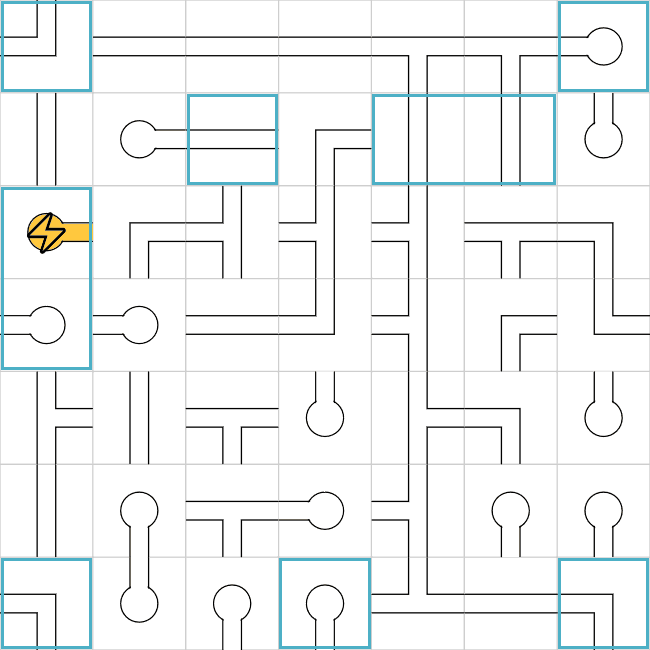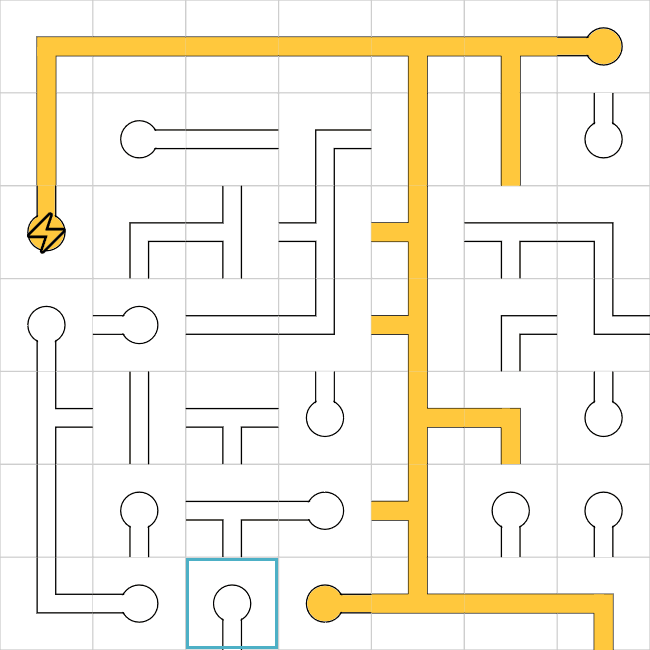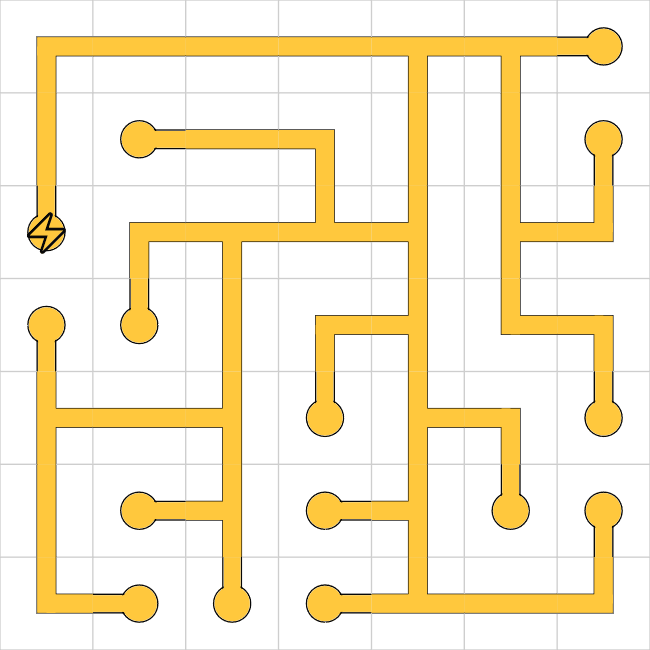Now that we have some tiles where we know the orientation, we can now look at the tiles connected to
our fixed tiles. Again, it's helpful to think in terms of entrances/exits from those tiles. The tile
above the power tile for example requires a connection from below, this is an end-node and there is
only one orientation that satisfies that requirement.
All of the highlighted cells have some connection requirements. We could have fixed the corner tiles
right at the start - there is only one orientation that means there isn't an exit pointing at the
puzzle boundary. Some of our cells also happen to be in the right orientation already.
The straight line tiles in the second row can also be decided. Two of them needs a connection from
above, which forces the vertical orientation. The one on the left has no connection requirements from
above, which means it is must be horizontal.
 Network leaderboard
Network leaderboard



